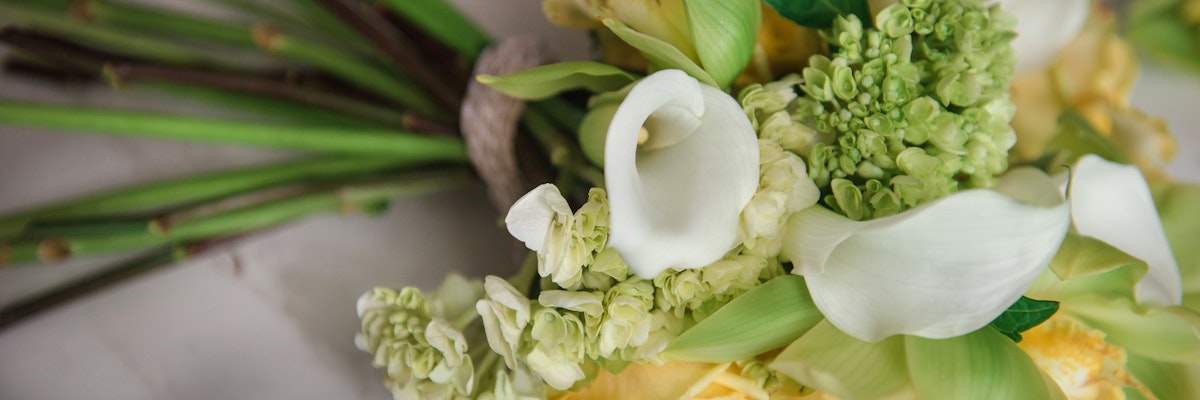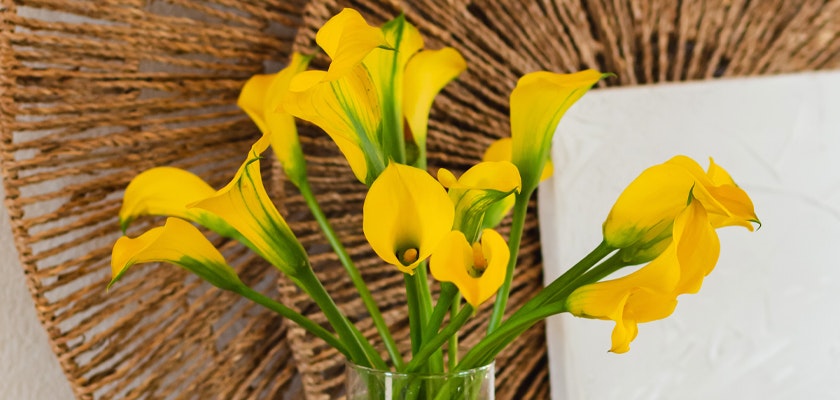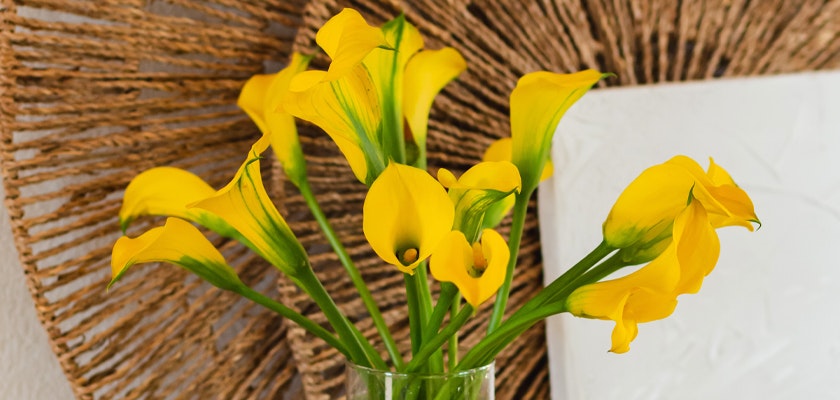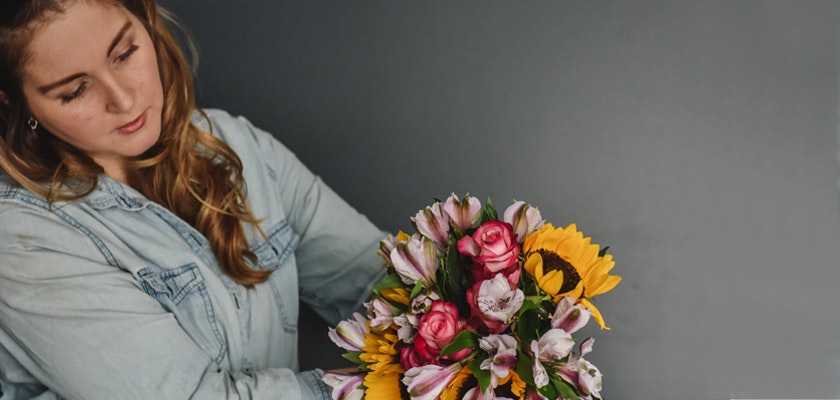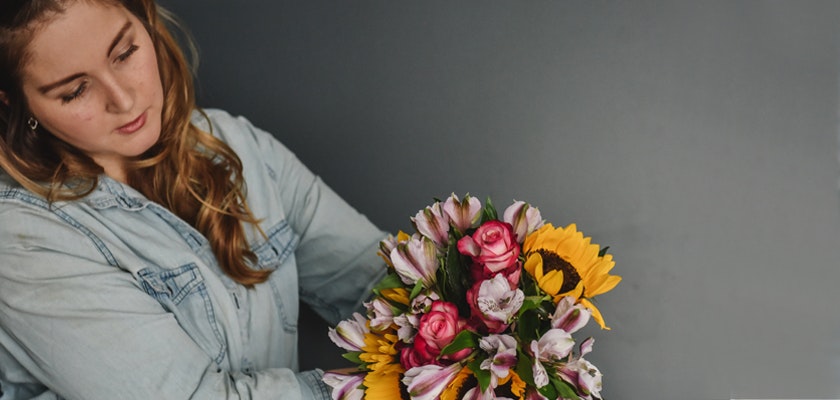The Hidden Dangers in Your Garden: A Comprehensive Guide to Poisonous Flowers and Plants
Gardening is a rewarding activity that not only enhances the aesthetic appeal of your home but also provides a therapeutic escape from the hustle and bustle of daily life. However, amidst the beauty and tranquility that your garden offers, there lie hidden dangers in the form of poisonous plants and flowers.
Learn about Toxic Plants & Flowers with this Comprehensive Guide
Unbeknownst to many, some common plants and flowers can pose significant health risks due to their toxic properties.
Many plants produce toxic substances as part of their natural defense mechanism against predators. These toxins can cause a range of symptoms, from mild irritation to severe health complications, depending on the amount ingested or contacted. While these plants may look harmless or even attractive, coming into contact with them can lead to unpleasant consequences.
This blog post aims to shed light on the issue of plant toxicity and help you identify and avoid poisonous plants and flowers in your garden. We'll delve into the nature of plant toxins, provide examples of poisonous plants and flowers, and offer safety tips for dealing with unknown plant species. Remember, knowledge is power, and being aware of these potential hazards can ensure a safe and enjoyable gardening experience.
Learn about Toxic Plants & Flowers with this Comprehensive Guide
Unbeknownst to many, some common plants and flowers can pose significant health risks due to their toxic properties.
Many plants produce toxic substances as part of their natural defense mechanism against predators. These toxins can cause a range of symptoms, from mild irritation to severe health complications, depending on the amount ingested or contacted. While these plants may look harmless or even attractive, coming into contact with them can lead to unpleasant consequences.
This blog post aims to shed light on the issue of plant toxicity and help you identify and avoid poisonous plants and flowers in your garden. We'll delve into the nature of plant toxins, provide examples of poisonous plants and flowers, and offer safety tips for dealing with unknown plant species. Remember, knowledge is power, and being aware of these potential hazards can ensure a safe and enjoyable gardening experience.
Understanding Plant Toxicity
Plant toxicity refers to the harmful effects that certain plants can have on humans and animals when ingested or touched. These effects are caused by toxic compounds produced by the plants, which serve as a chemical defense mechanism against predators. The severity of the symptoms varies depending on the type of plant, the part of the plant involved (leaves, stems, seeds, or flowers), and the individual's sensitivity to the toxin.
Not all toxic plants are deadly, but they can still cause discomfort and health issues. For example, poison ivy, oak, and sumac are not lethal, but coming into contact with their oil can cause an itchy, blistering rash. Other plants, like castor beans and deadly nightshade, contain potent toxins that can be fatal if ingested.
It's also worth noting that a plant's toxicity can vary depending on the time of year, the plant's growth stage, and environmental conditions. For this reason, it's essential to exercise caution when handling unfamiliar plants, especially if you have children or pets who may unknowingly come into contact with them.
Hazardous Greenery: 10 Toxic Plants to Steer Clear Of
When curating your garden, it's crucial to know which plants can potentially pose a threat to your family's health. Let's explore 10 such toxic plants and understand why they should be avoided.
1. Castor Bean (Ricinis communis): Known for its vibrant foliage and spiky seed pods, the castor bean plant is a common choice for ornamental gardening. However, its seeds contain ricin, one of the most toxic naturally occurring substances. Ingesting just one or two seeds can lead to severe symptoms, including nausea, abdominal pain, and even death in extreme cases.
2. Daffodil (Narcissus): These popular spring-blooming flowers add a splash of color to any garden. However, all parts of the daffodil plant are poisonous, especially the bulb. Ingesting daffodil bulbs can cause vomiting, diarrhea, and abdominal pain.
3. Deadly Nightshade (Atropa belladonna): Despite its ominous name, deadly nightshade can often be mistaken for edible berries due to its small, shiny black fruits. However, eating these berries can lead to hallucinations, convulsions, and even death.
4. Monkshood (Aconitum spp.): This perennial plant is admired for its beautiful hooded purple flowers. However, it's one of the most toxic plants found in the Northern Hemisphere. Ingesting or touching monkshood can lead to numbness, nausea, and heart problems.
5. Lily of the Valley (Convallaria majalis): Known for its sweet-smelling bell-shaped flowers, lily of the valley is a popular choice for shady gardens. However, all parts of the plant are highly toxic and can cause abdominal pain, blurred vision, and irregular heartbeat if ingested.
6. Foxgloves (Digitalis purpurea): Foxgloves are known for their tall spikes of tubular flowers. While they're beautiful to look at, they contain a potent toxin that can affect the heart. Ingesting any part of this plant can lead to heart palpitations, dizziness, and even death.
7. Oleander (Nerium oleander): This evergreen shrub is popular for its vibrant, fragrant flowers. However, every part of the oleander plant is toxic. Ingesting oleander can cause nausea, irregular heartbeat, and can be fatal in some cases.
8. Rhododendron (Rhododendron ponticum): Rhododendrons are admired for their stunning, large flower clusters. However, their leaves and nectar contain a toxin that can cause vomiting, diarrhea, and a drop in blood pressure.
9. Hemlock (Conium maculatum): Hemlock is a tall, flowering plant that's often mistaken for parsley due to its similar-looking leaves. However, this plant is highly toxic and can cause paralysis and death if ingested.
10. Yew (Taxus baccata): Often used for hedges and topiaries, yew trees have red berry-like fruits which are attractive but extremely poisonous. Ingesting yew berries can cause dizziness, dry mouth, and heart failure.
Understanding Plant Toxicity
Plant toxicity refers to the harmful effects that certain plants can have on humans and animals when ingested or touched. These effects are caused by toxic compounds produced by the plants, which serve as a chemical defense mechanism against predators. The severity of the symptoms varies depending on the type of plant, the part of the plant involved (leaves, stems, seeds, or flowers), and the individual's sensitivity to the toxin.
Not all toxic plants are deadly, but they can still cause discomfort and health issues. For example, poison ivy, oak, and sumac are not lethal, but coming into contact with their oil can cause an itchy, blistering rash. Other plants, like castor beans and deadly nightshade, contain potent toxins that can be fatal if ingested.
It's also worth noting that a plant's toxicity can vary depending on the time of year, the plant's growth stage, and environmental conditions. For this reason, it's essential to exercise caution when handling unfamiliar plants, especially if you have children or pets who may unknowingly come into contact with them.
Hazardous Greenery: 10 Toxic Plants to Steer Clear Of
When curating your garden, it's crucial to know which plants can potentially pose a threat to your family's health. Let's explore 10 such toxic plants and understand why they should be avoided.
1. Castor Bean (Ricinis communis): Known for its vibrant foliage and spiky seed pods, the castor bean plant is a common choice for ornamental gardening. However, its seeds contain ricin, one of the most toxic naturally occurring substances. Ingesting just one or two seeds can lead to severe symptoms, including nausea, abdominal pain, and even death in extreme cases.
2. Daffodil (Narcissus): These popular spring-blooming flowers add a splash of color to any garden. However, all parts of the daffodil plant are poisonous, especially the bulb. Ingesting daffodil bulbs can cause vomiting, diarrhea, and abdominal pain.
3. Deadly Nightshade (Atropa belladonna): Despite its ominous name, deadly nightshade can often be mistaken for edible berries due to its small, shiny black fruits. However, eating these berries can lead to hallucinations, convulsions, and even death.
4. Monkshood (Aconitum spp.): This perennial plant is admired for its beautiful hooded purple flowers. However, it's one of the most toxic plants found in the Northern Hemisphere. Ingesting or touching monkshood can lead to numbness, nausea, and heart problems.
5. Lily of the Valley (Convallaria majalis): Known for its sweet-smelling bell-shaped flowers, lily of the valley is a popular choice for shady gardens. However, all parts of the plant are highly toxic and can cause abdominal pain, blurred vision, and irregular heartbeat if ingested.
6. Foxgloves (Digitalis purpurea): Foxgloves are known for their tall spikes of tubular flowers. While they're beautiful to look at, they contain a potent toxin that can affect the heart. Ingesting any part of this plant can lead to heart palpitations, dizziness, and even death.
7. Oleander (Nerium oleander): This evergreen shrub is popular for its vibrant, fragrant flowers. However, every part of the oleander plant is toxic. Ingesting oleander can cause nausea, irregular heartbeat, and can be fatal in some cases.
8. Rhododendron (Rhododendron ponticum): Rhododendrons are admired for their stunning, large flower clusters. However, their leaves and nectar contain a toxin that can cause vomiting, diarrhea, and a drop in blood pressure.
9. Hemlock (Conium maculatum): Hemlock is a tall, flowering plant that's often mistaken for parsley due to its similar-looking leaves. However, this plant is highly toxic and can cause paralysis and death if ingested.
10. Yew (Taxus baccata): Often used for hedges and topiaries, yew trees have red berry-like fruits which are attractive but extremely poisonous. Ingesting yew berries can cause dizziness, dry mouth, and heart failure.
Beware the Blooms: 15 Toxic Flowers to Be Wary Of
Just as with plants, there are numerous flowers that, while beautiful, can pose significant health risks due to their toxic properties. Let's delve into 15 such flowers and understand why they should be handled with care.
1. Autumn Crocus (Colchicum autumnale): This flower blooms in the fall, displaying lovely pink or purple petals. However, all parts of the Autumn Crocus are poisonous and can cause severe stomach upset, kidney and liver damage, and even death if ingested.
2. Azalea (Rhododendron spp.): Azaleas are popular for their vibrant, showy flowers. But beware, azaleas contain toxins that can cause nausea, difficulty breathing, and a decrease in blood pressure.
3. Calla Lily (Zantedeschia aethiopica): Calla Lilies are revered for their distinctive funnel-shaped flowers. However, they contain oxalic acid, which can cause skin irritation on contact and severe mouth and throat irritation if ingested.
4. Hydrangea (Hydrangea macrophylla): Hydrangeas are admired for their large, colorful flower clusters. However, the plant contains cyanogenic glycosides, which can cause shortness of breath, dizziness, fainting, and rapid pulse if ingested.
5. Mountain Laurel (Kalmia latifolia): These evergreen shrubs produce clusters of attractive pink or white flowers. However, eating any part of the plant can cause headache, nausea, irregular heartbeat, and in severe cases, even death.
6. Morning Glory (Ipomoea purpurea): These climbing vines bear trumpet-shaped flowers that bloom in the morning. However, their seeds contain lysergic alkaloids, which can cause hallucinations if ingested.
7. Periwinkle (Vinca minor): Known for its bright blue flowers and glossy leaves, periwinkle is a popular groundcover plant. However, it contains alkaloids that can cause nausea, vomiting, and a drop in blood pressure if ingested.
8. Poinsettia (Euphorbia pulcherrima): A popular holiday plant, poinsettias are known for their vibrant red bracts. However, their sap can cause skin irritation, and ingesting the plant can lead to stomach upset.
9. Sweet Pea (Lathyrus odoratus): Sweet peas are loved for their delicate, fragrant flowers. However, prolonged consumption of sweet pea seeds can cause a condition known as 'lathyrism,' affecting the nervous system and causing paralysis.
10. Wisteria (Wisteria spp.): Wisterias are admired for their cascading clusters of fragrant flowers. However, their seeds and pods contain a toxin that can cause stomach upset if ingested.
11. Angel's Trumpet (Brugmansia): These shrubs are known for their large, hanging trumpet-shaped flowers. However, all parts of the plant are highly toxic and can cause hallucinations, confusion, and in severe cases, death if ingested.
12. Larkspur (Delphinium): Larkspurs bear tall spikes of vibrant blue flowers. However, they contain alkaloids that can cause nausea, muscle weakness, and heart problems if ingested.
13. Lupine (Lupinus): Lupines are admired for their tall flower spikes and attractive foliage. However, their seeds and pods contain a toxin that can cause sluggishness, depression, and convulsions if ingested.
14. Star of Bethlehem (Ornithogalum umbellatum): These perennial plants produce clusters of star-shaped white flowers. However, all parts of the plant are poisonous and can cause abdominal pain, slow heartbeat, and tremors if ingested.
15. Bleeding Heart (Dicentra spectabilis): Known for its heart-shaped pink and white flowers, the Bleeding Heart plant is a favorite in many gardens. However, it contains alkaloids that can cause skin irritation on contact and symptoms such as nausea and vomiting if ingested.
Safety First When Dealing with Unknown Flowers and Plants
With the vast variety of plants and flowers available, it's essential to exercise caution when introducing new species into your garden, especially if you have children or pets who may unknowingly come into contact with them. Here are some safety tips to consider:
1. Research Before You Plant: Before purchasing a plant or flower, do some research to understand its properties. Check if it's safe to handle or whether it poses any potential health risks.
2. Label Your Plants: It's a good practice to label your plants, especially if you're growing a variety of species. This way, you can quickly identify them and remember their respective care instructions and safety precautions.
3. Educate Family Members: Teach your family members, especially children, about the dangers of ingesting unknown plants and flowers. Encourage them to ask an adult if they're unsure about a plant's safety.
4. Wear Protective Gear: When handling potentially toxic plants, always wear protective gear such as gloves and long sleeves. This will help prevent skin contact with harmful substances.
5. Keep Emergency Contacts Handy: Always have the contact details of your local poison control center handy. In case of accidental ingestion or exposure, seek medical help immediately.
While gardens are meant to be enjoyed, it's crucial to stay informed about the potential dangers lurking among the foliage. By being aware and taking necessary precautions, you can ensure a safe and enjoyable gardening experience.
Beware the Blooms: 15 Toxic Flowers to Be Wary Of
Just as with plants, there are numerous flowers that, while beautiful, can pose significant health risks due to their toxic properties. Let's delve into 15 such flowers and understand why they should be handled with care.
1. Autumn Crocus (Colchicum autumnale): This flower blooms in the fall, displaying lovely pink or purple petals. However, all parts of the Autumn Crocus are poisonous and can cause severe stomach upset, kidney and liver damage, and even death if ingested.
2. Azalea (Rhododendron spp.): Azaleas are popular for their vibrant, showy flowers. But beware, azaleas contain toxins that can cause nausea, difficulty breathing, and a decrease in blood pressure.
3. Calla Lily (Zantedeschia aethiopica): Calla Lilies are revered for their distinctive funnel-shaped flowers. However, they contain oxalic acid, which can cause skin irritation on contact and severe mouth and throat irritation if ingested.
4. Hydrangea (Hydrangea macrophylla): Hydrangeas are admired for their large, colorful flower clusters. However, the plant contains cyanogenic glycosides, which can cause shortness of breath, dizziness, fainting, and rapid pulse if ingested.
5. Mountain Laurel (Kalmia latifolia): These evergreen shrubs produce clusters of attractive pink or white flowers. However, eating any part of the plant can cause headache, nausea, irregular heartbeat, and in severe cases, even death.
6. Morning Glory (Ipomoea purpurea): These climbing vines bear trumpet-shaped flowers that bloom in the morning. However, their seeds contain lysergic alkaloids, which can cause hallucinations if ingested.
7. Periwinkle (Vinca minor): Known for its bright blue flowers and glossy leaves, periwinkle is a popular groundcover plant. However, it contains alkaloids that can cause nausea, vomiting, and a drop in blood pressure if ingested.
8. Poinsettia (Euphorbia pulcherrima): A popular holiday plant, poinsettias are known for their vibrant red bracts. However, their sap can cause skin irritation, and ingesting the plant can lead to stomach upset.
9. Sweet Pea (Lathyrus odoratus): Sweet peas are loved for their delicate, fragrant flowers. However, prolonged consumption of sweet pea seeds can cause a condition known as 'lathyrism,' affecting the nervous system and causing paralysis.
10. Wisteria (Wisteria spp.): Wisterias are admired for their cascading clusters of fragrant flowers. However, their seeds and pods contain a toxin that can cause stomach upset if ingested.
11. Angel's Trumpet (Brugmansia): These shrubs are known for their large, hanging trumpet-shaped flowers. However, all parts of the plant are highly toxic and can cause hallucinations, confusion, and in severe cases, death if ingested.
12. Larkspur (Delphinium): Larkspurs bear tall spikes of vibrant blue flowers. However, they contain alkaloids that can cause nausea, muscle weakness, and heart problems if ingested.
13. Lupine (Lupinus): Lupines are admired for their tall flower spikes and attractive foliage. However, their seeds and pods contain a toxin that can cause sluggishness, depression, and convulsions if ingested.
14. Star of Bethlehem (Ornithogalum umbellatum): These perennial plants produce clusters of star-shaped white flowers. However, all parts of the plant are poisonous and can cause abdominal pain, slow heartbeat, and tremors if ingested.
15. Bleeding Heart (Dicentra spectabilis): Known for its heart-shaped pink and white flowers, the Bleeding Heart plant is a favorite in many gardens. However, it contains alkaloids that can cause skin irritation on contact and symptoms such as nausea and vomiting if ingested.
Safety First When Dealing with Unknown Flowers and Plants
With the vast variety of plants and flowers available, it's essential to exercise caution when introducing new species into your garden, especially if you have children or pets who may unknowingly come into contact with them. Here are some safety tips to consider:
1. Research Before You Plant: Before purchasing a plant or flower, do some research to understand its properties. Check if it's safe to handle or whether it poses any potential health risks.
2. Label Your Plants: It's a good practice to label your plants, especially if you're growing a variety of species. This way, you can quickly identify them and remember their respective care instructions and safety precautions.
3. Educate Family Members: Teach your family members, especially children, about the dangers of ingesting unknown plants and flowers. Encourage them to ask an adult if they're unsure about a plant's safety.
4. Wear Protective Gear: When handling potentially toxic plants, always wear protective gear such as gloves and long sleeves. This will help prevent skin contact with harmful substances.
5. Keep Emergency Contacts Handy: Always have the contact details of your local poison control center handy. In case of accidental ingestion or exposure, seek medical help immediately.
While gardens are meant to be enjoyed, it's crucial to stay informed about the potential dangers lurking among the foliage. By being aware and taking necessary precautions, you can ensure a safe and enjoyable gardening experience.
BloomsyBox: A Safe Choice for Beautiful Bouquets
If you love having fresh flowers in your home but worry about the potential toxicity of certain blooms, consider a subscription with BloomsyBox. They offer beautiful, hand-tied bouquets delivered straight to your door. The flowers are sourced directly from sustainable farms, ensuring that you receive only the highest quality blooms.
One of the benefits of choosing BloomsyBox is the peace of mind knowing that your bouquet is safe to handle. The expert florists at BloomsyBox take care to select only non-toxic flowers for their arrangements, making them safe for homes with children or pets.
Another advantage of BloomsyBox is the variety they offer. Each month, you'll receive a different bouquet featuring in-season flowers. This allows you to enjoy a wide range of blooms throughout the year without worrying about their toxicity.
BloomsyBox: A Safe Choice for Beautiful Bouquets
If you love having fresh flowers in your home but worry about the potential toxicity of certain blooms, consider a subscription with BloomsyBox. They offer beautiful, hand-tied bouquets delivered straight to your door. The flowers are sourced directly from sustainable farms, ensuring that you receive only the highest quality blooms.
One of the benefits of choosing BloomsyBox is the peace of mind knowing that your bouquet is safe to handle. The expert florists at BloomsyBox take care to select only non-toxic flowers for their arrangements, making them safe for homes with children or pets.
Another advantage of BloomsyBox is the variety they offer. Each month, you'll receive a different bouquet featuring in-season flowers. This allows you to enjoy a wide range of blooms throughout the year without worrying about their toxicity.
In conclusion, while many common garden plants and flowers can pose health risks due to their toxic properties, being informed and taking necessary precautions can help ensure a safe gardening experience. And for those who love fresh bouquet delivery, services like BloomsyBox offer a safe and convenient way to enjoy beautiful blooms all year round.
In conclusion, while many common garden plants and flowers can pose health risks due to their toxic properties, being informed and taking necessary precautions can help ensure a safe gardening experience. And for those who love fresh bouquet delivery, services like BloomsyBox offer a safe and convenient way to enjoy beautiful blooms all year round.
